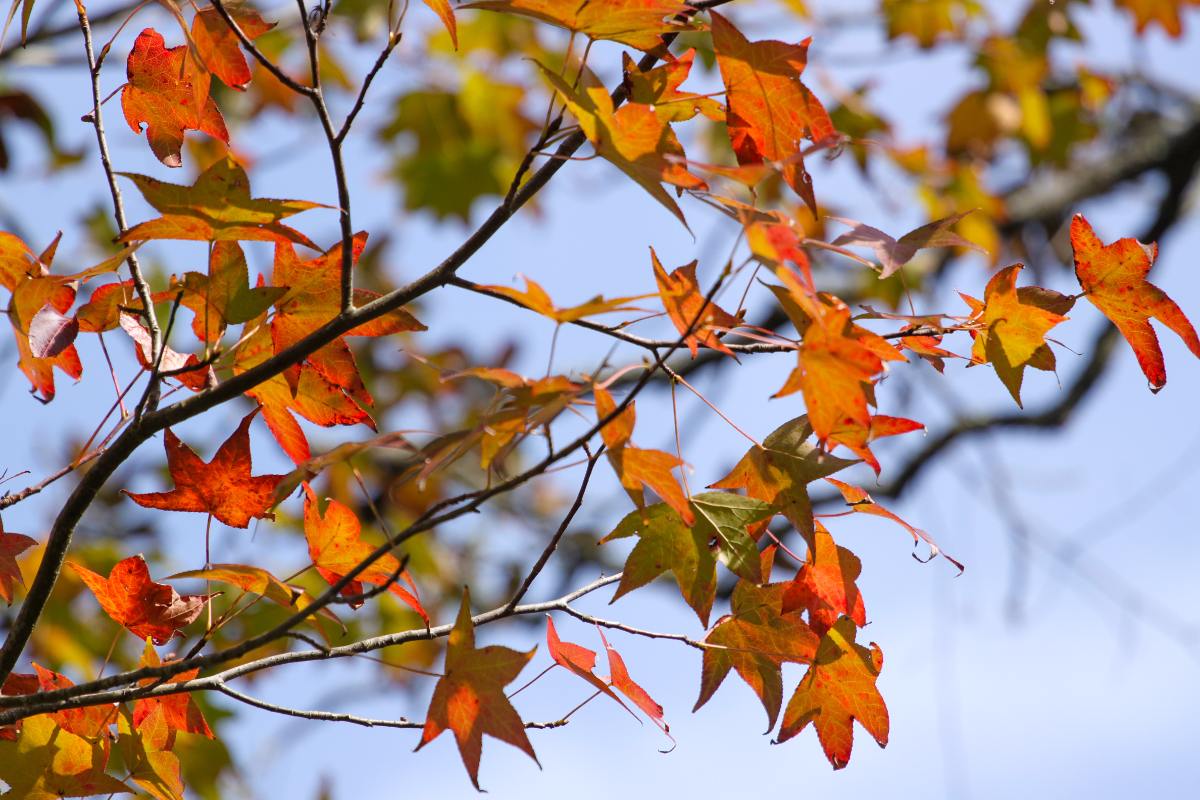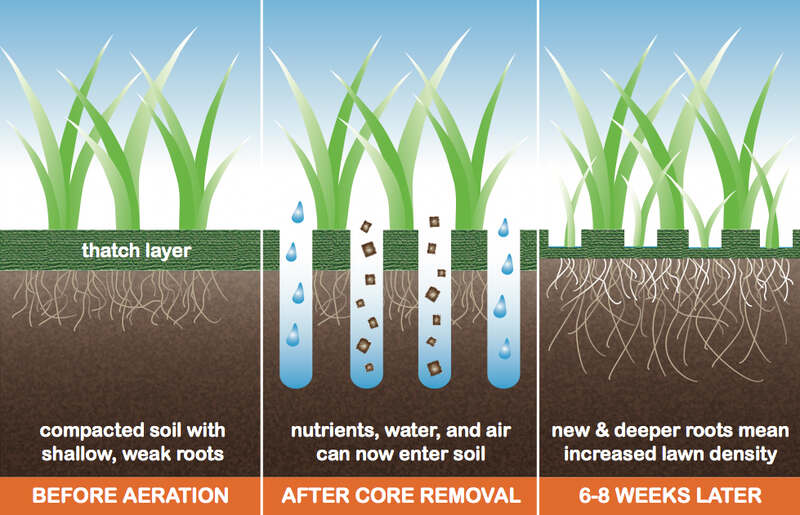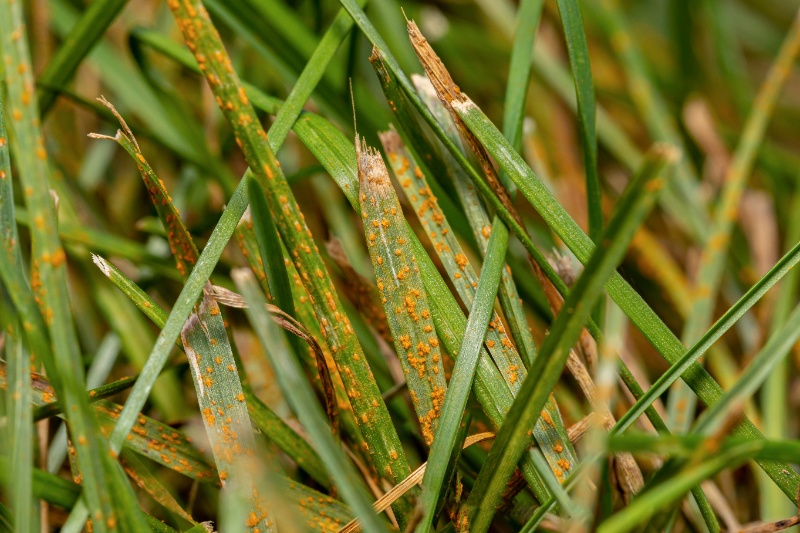
Is there a better time of year in Jacksonville than the fall? The weekend calendar is brimming with outdoor festivals, the Jaguars are in action, and – at least in September and October – you can still sneak in a beach day at Neptune or Atlantic.
With so much going on, maybe you’re tempted to let yard work slide. Don’t. Fall is the time to fertilize, knock out fall weeds, perhaps even dethatch and aerate. For good measure, you should attack pests before they turn your lovely green yard into their own personal bug buffet.
The TLC you give your grass in the fall will determine how strongly it bounces back in the spring.
Reduce Watering a Bit
Grass in Jacksonville keeps growing into fall but needs less water as it gets cooler. Adjusting how much and how often you water in the fall helps your lawn stay healthy, promotes strong roots, and prevents disease.
So how much water does your lawn need? To look its best and stay its healthiest, make sure it gets half an inch to three quarters of an inch of water a week in the fall, or roughly half of what it gets in the summer. You can achieve that by watering each zone for about 15 minutes apiece, twice a week. Water in the morning before 10 a.m. to limit the effects of evaporation.
Check out the following guide for more “Tips for Watering Your Jacksonville Lawn”
Fertilize in October

Fertilize your grass sometime in October to give it a last shot of nutrients before it slips into dormancy later in the year.
Look for fertilizers with equal nitrogen and potassium numbers (like 16-4-16). The potassium strengthens grass cell walls for better cold tolerance. Keep phosphorus low, as the soil in Jacksonville usually has plenty. If you’re not sure what it needs, get your soil tested at the Duval County Extension.
Find the best options for you with our guide on “The Best Lawn Fertilization Schedule and Tips for Florida.”
Slow Your Mow Mid-Fall
Our warmer climate means a longer growing season, so lawns continue to grow into fall, albeit at a slightly slower pace. As growth slows in mid-fall, around late October, mow every 10-14 days instead of weekly. This schedule allows grass to develop stronger roots while saving energy for the winter months ahead.
Make sure your blades are sharp. Dull mower blades tear grass rather than cutting it cleanly, creating entry points for disease. And raise your mower deck by 1/2 inch. Leaving slightly taller grass develops deeper roots, retains more moisture, and better insulates against temperature fluctuations.
Attack Fall Weeds
Early October is your prime window of opportunity to obliterate emerging fall weeds. Apply pre-emergent herbicides before nighttime temperatures drop below 70 degrees to keep the seeds from germinating when your grass goes dormant.
Focus treatment on problem areas where you had weeds last year, thin turf going into dormancy, and shaded spots under trees. Remember that pre-emergents only prevent new weeds from sprouting, so any weeds already growing will have to be dealt with on their own, either by hand-pulling or using a post-emergent herbicide.
For complete weed identification, timing guides, and treatment options for all seasons, see our detailed Common Weeds in Jacksonville guide.
Aerate Compacted Soil

Heavy rain, construction in newer lots, and lots of foot traffic can compact your soil, making it harder for your turf’s roots to get the water, nutrients, and oxygen they need. Core aeration relieves soil compaction and is best done in the River City area from September through October.
Concentrate on high-traffic zones like pathways, play areas, or areas where water pools on the surface from rain or irrigation. Also, check the grass that looks thin despite fertilizer and careful watering. You can use a screwdriver to test for compacted soil. If you can’t easily push a screwdriver 6 inches into the soil, then the soil likely needs to be aerated.
You can learn more ways to get around this problem with our guide, How to Fix Compacted Soil.
Pulverize Pests

Jacksonville’s warmer climate makes fall a prime habitat for destructive lawn pests. From August through October, armyworms, chinch bugs, and white grubs can quickly devastate large areas of turf if left unchecked.
Catch problems early by looking for unusual brown spots, soft areas in your lawn, or more birds and animals digging in your yard. The best way to prevent pests is by keeping your lawn healthy. If you already have pests, try using beneficial nematodes. Nematodes are natural organisms that kill harmful insects without hurting the beneficial ones.
For detailed identification guides and treatment options for Jacksonville’s most damaging lawn pests, visit our comprehensive“Worst Landscape Pests in Jacksonville guide.
Watch for Lawn Diseases

Cool fall nights combined with warm days create ideal conditions for fungal diseases in Jacksonville lawns.
- Large patch forms expanding brown circles during temperature swings.
- Take-all root rot causes gradual thinning by attacking roots.
- Helminthosporium leaf spot creates brown-purple spots that may lead to “melting-out.”
- Dollar spot produces small brown patches that can merge into larger dead areas.
If you spot disease symptoms, reduce watering frequency immediately and improve drainage in problem areas. As temperatures cool toward winter, rust disease may appear on Zoysia and St. Augustine grass with orange pustules, but this cosmetic issue merely signals normal dormancy transition.
Learn how to identify and treat specific lawn diseases in our guide, Winter Lawn Diseases in Jacksonville, FL
Clean and Prep for Winter
There are several benefits to fall yard cleanup. It prevents disease and removes hiding places for pests to make their winter homes in your lawn. Remove fallen leaves so they don’t block sunlight and trap moisture against the grass. Also, clear away sticks, toys, and equipment that might kill the grass beneath them. Cut back low-hanging branches to let in more light.
Don’t wait until all leaves have fallen to clean up. Rake or blow them regularly. You can mow over small amounts of leaves to turn them into mulch, but remove large piles. Clean your gutters to prevent water overflow, which causes muddy spots. Compost leaves or check the MyJax Yard Waste page for pickup service.
Keep taking care of your lawn during winter with our Winter Lawn Care Tips for Jacksonville
Optional: Overseed for Winter Color

Jacksonville’s warm-season grasses naturally go brown and dormant when soil temperatures drop below 60 degrees, typically December through February. The University of Florida (UF/IFAS) recommends overseeding with annual ryegrass from October to November before soil temps get too low. It creates a temporary winter turf that dies back naturally in spring.
However, overseeded areas need consistent watering and care throughout winter, so weigh the time, cost, and maintenance commitment against simply accepting natural dormancy for your specific landscape situation.
Set Your Lawn Up for Success

Taking care of your lawn in the fall helps it survive winter and grow well in spring. Start with the basics: water properly, add fertilizer at the right time, and check for any potential issues. Fix problems like poor drainage or compacted soil right away.
If you’d rather leave it to the pros so you can enjoy your weekends rather than working on your yard, LawnStarter connects Jacksonville homeowners with experienced local lawn care services that understand North Florida’s unique growing conditions and seasonal needs.
Related Reading:
- 10 Spring Lawn Care Tips for Jacksonville
- Summer Lawn Care Checklist for Jacksonville
- Winter Lawn Care Tips for Jacksonville
- Florida-Friendly Landscaping Ideas
- Hurricane-Resistant Landscaping Ideas for Florida
Main Image: Fall Colors Shine through Maple Leaves in Cradle Creek Preserve in Jacksonville Beach, Florida. Photo Credit: Donna / Adobe Stock